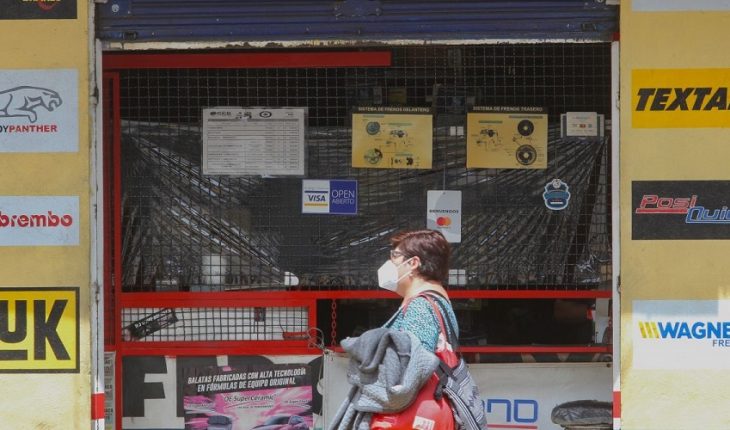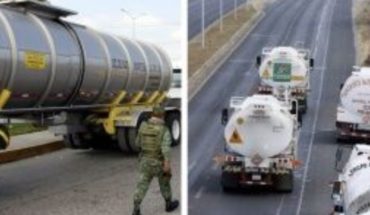The Ministry of Health reported on June 26 by presenting the Epidemiological Risk Traffic Light for COVID-19, in force throughout the following week, that 18 entities are already orange, high risk but not as high as the 14 states that remain in red follow.
Among the entities that went orange are CDMX, Chiapas and Querétaro; while Colima, Hidalgo and Nuevo León returned to red.
Read more: CDMX switches to orange traffic light: These are the activities that are reactivated
So the 18 states that are now in orange are: Aguascalientes, Baja California Sur, Campeche, Chiapas, Chihuahua, Mexico City, Coahuila, Durango, Guanajuato, Jalisco, Michoacán, Querétaro, Quintana Roo, San Luis Potosí, Tamaulipas, Veracruz, Yucatan and Zacatecas.
While those who remain in red are: Baja California, Colima, State of Mexico; Guerrero, Hidalgo, Morelos, Nayarit, Nuevo León, Oaxaca, Puebla, Sinaloa, Sonora, Tabasco and Tlaxcala.
COVID-19 traffic light map for June 29 to July 5
Regarding the change of CDMX from red to orange, the Undersecretary of Health, Hugo López-Gatell, explained that this is because the income trend to capital hospitals for COVID-19 is declining.
“There are fewer people entering the hospitals than the number of people leaving the hospital, and this is not due to mortality, but because people are leaving high,” he said.
Federal health authorities have explained that traffic light is built with four indicators: hospital occupancy, which has 50% weight in rating; the inpatient tendencies, with 20%; the tendency of COVID-19 syndrome (the number of suspected cases), also with 20% and the percentage of positivity to the SARS-Cov2 virus that causes COVID-19 disease, with 10% of the weight for the risk rating.
To give concrete examples of how the traffic light is built, López-Gatell said he had a meeting with the governor of Aguascalientes, “in this case we found that there was a missing data, it was solved and (the state) passed to the orange traffic light given its availability of beds”.
The undersecretary explained that he also spoke to the governor of the State of Mexico, Alfredo del Mazo, “since CDMX will go orange and the State of Mexico stays in red, that could present contradiction, by the relationship of the two entities in the Valley of Mexico, but the governor considers this as a transition period and will take the risk to identify processes adapted in shops , in services, among others.”
Find out: Despite reduction of hospitalizations, Edomex will remain at red light by COVID
CoVID-19 risk traffic light stops between June 29 and July 5
Another example López-Gatell gave to make it clear that the traffic light is built in dialogue with state leaders was Guerrero. He said that a talk with Governor Hector Astudillo on the dynamics in Acapulco talked about how the bank has managed to scale its hospital capacity to give better care to people.
“Even though it stays in red (this state) the trend is positive, because the trend in the number of cases begins to slow down, so they will take the time to make preparations on the issue of deconfining spaces such as beaches.”
In the case of the state of Hidalgo, the federal official commented that with Governor Omar Fayad a proposal for opening in public spaces such as community spas has been discussed, “which are an important part of the economy and social life in the entity, what they identified is that it could be reopened with a limited capacity”.
In the entities that follow at red light, hotels must operate with the common areas closed and a maximum occupancy of 25%, in which they are already in orange you can open the common areas and have a capacity of 50% occupancy.
Restaurants in the red states are still only on-site services, while in those that are in orange they can open with a capacity of 50%, as in the case of the CDMX, and the same in terms of hairdressers and barbershops.
Supermarkets and markets can operate with 75% capacity in orange entities and with only 50% in those still in red. While gyms, swimming pools and sports clubs are closed in red and with 50% capacity and with an orange appointment.
Cinemas, museums and cultural events are closed in red and with 25% capacity in orange. Shopping centres will also remain closed in the entities in red and with 25% capacity in orange and the same religious centers.
Concerts and mass events of more than 500 people, as well as bars and nightclubs must remain suspended and closed in both red and orange.
What We Do at Animal Politician requires professional journalists, teamwork, dialogue with readers and something very important: independence. You can help us keep going. Be part of the team.
Subscribe to Animal Politics, receive benefits and support free journalism #YoSoyAnimal.
translated from Spanish: CDMX, Chiapas, Querétaro and 15 more states will go to orange traffic lights
June 26, 2020 |





